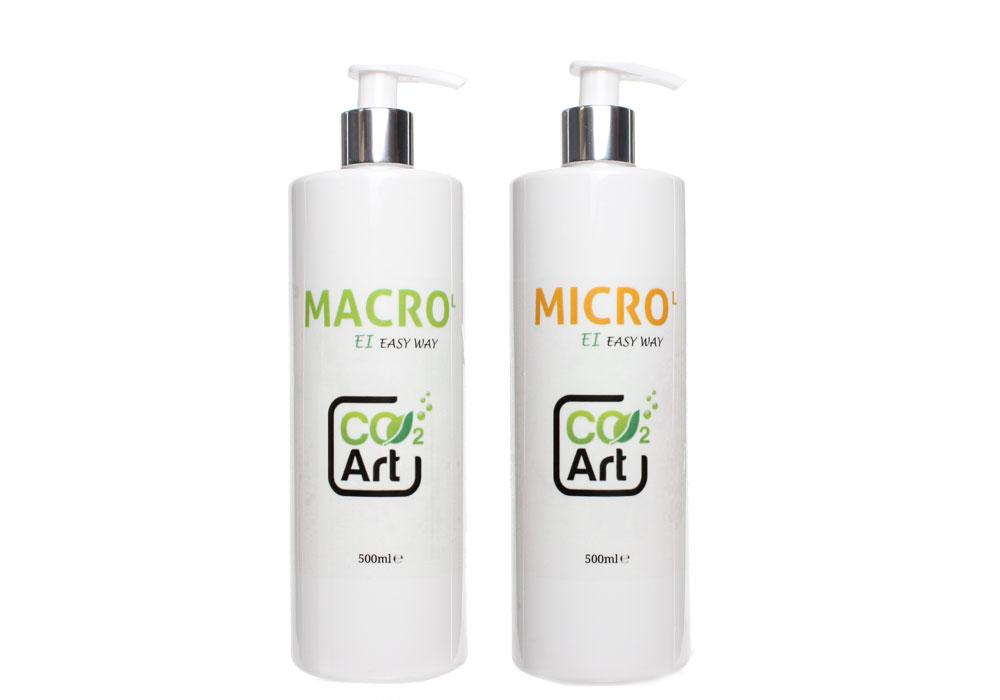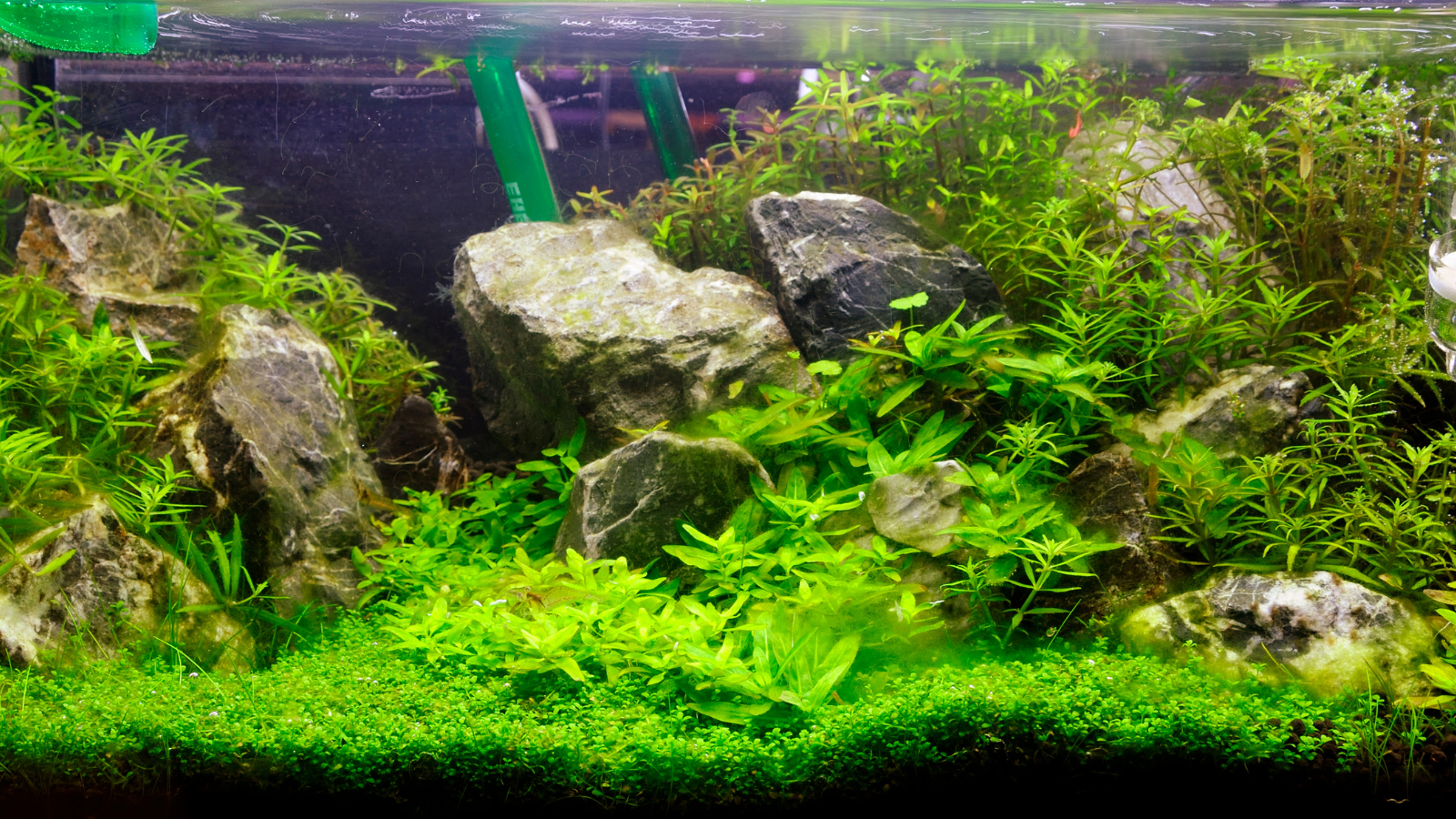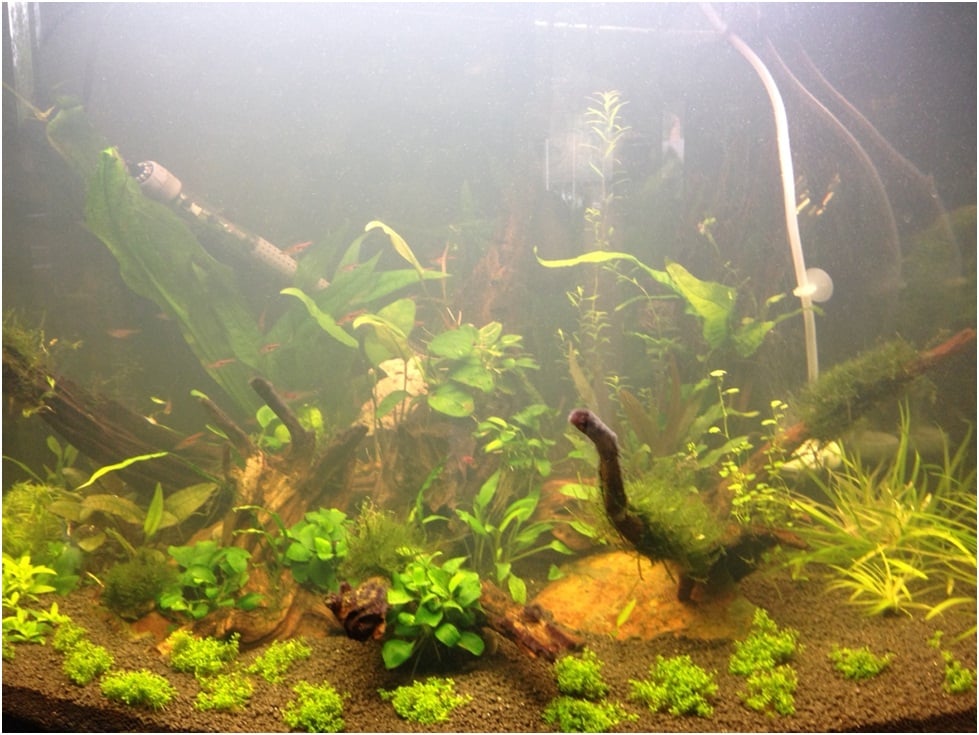
The salts used in the preparation of our nutrient products are based on Tom Barr's Estimative Index (EI) dosing scheme. None of these ingredients are in any way toxic to fauna when used in the dosages suggested. In fact, to even approach a toxic level would required the addition of orders of magnitude of the listed dosages. It is actually more toxic to add food to the aquarium than to add any of these products. Hobbyists regularly overfeed their fish and the result is water pollution, leading to hypoxia, leading to increased suceptibility to desease and death. There are only a few limits, caveats or conditions associated with these nutrient products. These conditions are discussed below. The dosages can be adjusted up or down as suits the hobbyist based on their goals and objectives. On the contrary, adding these products enhances plant growth which directly improves overall health, which then leads to increased oxygenation of the water and removal of the real toxic components in the aquarium responsible for a majority of the fatalities.
The primary goal of EI is to ensure an abundance of the required nutrients. Aquatic plants feed primarily from their leaves, which have a direct interface with the surrounding water. This method is the most efficient since the distance the nutrients must travel from the water to the site where it is needed is on a few millimeters. In the dry season, when the plants are in a terretrial form, they are generally limited to root uptake of nutrients only. Nutrients must travel up through the roots into the leaves where they are processed. This is a much less efficient trip. When the dry season ends and the water level rises the plant leaves change in shape and texture to allow ease of nutrient and gaseous exchange. When this occurs the plant then has the option to draw nutrients from any location where it is available. By providing the foliar nutrient uptake path we enhance the plants ability to grow quickly by allowing the option of an efficient source of nutrition.
WHICH VERSION OF NUTRIENT PRODUCT DO I NEED?
The amount of nutrient required by plants is determined primarily by the amount of light falling on the leaf surface and by the level of Carbon Dioxide (CO2) available. As more light and CO2 is consumed the plant requres more nutrients. For this reason we have divided these nutrient products into two main categories:
The High Tech version which delivers a higher concentration of nutrition. It is assumed that the CO2 and lighting in the tank are high. Hobbyists using either CO2 gas injection or Liquid Carbon products, such as Excel, EasyCarbo, or any other Gluteraldehyde based product should use this version.
The Low Tech Version: delivers a much lower concentration level of nutrition. It is assumed therefore that no CO2 enrichment is being added to the tank and that the lighting is at a lower intensity. Hobbyists using this approach should use the low tech version.
USE OF THE HIGH TECH VERSION
Over the years, and based on the original recipe, the generally accepted target concentration levels are as follows:
Nitrate (NO3) 20ppm per week.
Potassium (K) 20-30ppm per week.
Phosphate (PO4) 3ppm per week
Iron (Fe) 0.5ppm per week
It's important to understand that these are GENERALL RULES OF THUMB numbers. They are not set in stone. Hobbyists are encouraged to vary the values up or down based on the response and conditions in the tank. For example, when a tank is first set up, it is often sparse and there is a low plant mass. typically, the hobbyists will want to accelerate the growth of the plants and so these target values achieve very good growth performance. Later however, growths rates may become tedious and so hobbyists often decide to reduce the light intensity, CO2 and nutrient dosing in order to reduce growth rates for a more relaxed regimen.
The High Tech version is composed of two bottles. A macronutrient solution and a micronutrient solution. Each pump of our bottle delivers 1.2ml of solution which, when added to 10L of tank water, increases the nutrient levels approximately as follows:
Macronutrient
6.6ppm Nitrate
1.3ppm Phosphate
4.7ppm Potassium
Micronutrient
0.26ppm Iron
0.15ppm Magnesium
In order to determine the proper dosage per week for a given tank size the easiest thing to do is to divide the tank size by 10L and multiply the result by 3.
Here is a example of how the dosage for a 40L tank would be determined:
40L divided by 10L = 4 pumps.
Therefore 4 pumps of each bottle increases the nutrient level in 40L of tank water by the ppm values listed above. This should be accomplished 3 times per week for the Macronutrient bottle and 2 times per week for the Micronutrient bottle. A total of 12 pumps per week of the Macronutrient bottle and 8 pumps per week of the Micronutrient bottle should be accomplished.
The dosage should be distributed evenly throughout the week. It's not a good idea, generally to add the entire dosage once a week, for example.
Best practice is to dose the Macronutrient on different days than the Micronutrient. If dosed concurrently, there is a stronger tendency for the Phosphate to combine with the metals in the Micronutrient solution and to form insoluble precipitates which cloud the water and remove some of the nutrients from the water.
When dosing the High Tech solution it is advised to perform regular weekly water changes of at least 50%. Plants enriched with CO2 produce vast amounts of organic waste, whcih appears as brown detritus. Fiters will become clogged with dirt more quickly and will require more frequent cleaning. As this excessive organic waste breaks down in the tank through bacterial action, the bacteria remove oxygen from the water in order to perform the breakdown, thereby stealing it from the fish (and plants). One of the keys to a successful CO2/nutrient enriched planted tank therefore is frequent large water changes.
USE OF THE LOW TECH VERSION
Normally, in low tech tanks, the rate of plant metabolism is very much slower than in CO2 enriched tanks. Many hobbyists depend on fish waste and other organic waste to break down into nutrients, however, it has been observed that small regular addition of these inorganic compounds are taken up by plants much more quickly and they enhance growth and appearance. There is a wide range of successful target concentration values. Our Macronutrient and Micronutrient deliver the following to 10L of water when dosed with a single pump:
1.2 ppm Nitrate (NO3)
0.12 ppm Phosphate (PO4)
0.76 ppm Potassium (K+)
0.1 ppm Fe
0.1 ppm Mg
Again using the 40L tank example, 40L divided by 10L = 4 pumps per week of each bottle, preferably on separate days during the week. If using RO or otherwise soft water, the dosages can easily be doubled or trebbled if signs of deficiencies are noted.
CAVEATS AND CONDITIONS
Do Not Use Test Kits To Determine The Ppm.
1. Hobby grade test kits are notoriously inaccurate. One of the many reasons is that they are influenced by the presence of other ions in the water, especially chloride and sulfates, which are typically in abundance, particularly in tap water. Because these interfering ions are not at a consitent level in tank water the test kit readings will also be inconsistently inaccurate. This means that one day they can be merely marginally wrong and the next day (or next hour) the same kit can be grossly inaccurate. A simple change in humidity can throw off a kit's response.
2. Test kits are expensive. Money is much better spent on plants or other, more useful items.
3. The test kit will not tell you anything that you don't already know by looking at your plants, and oftentimes, they tell you the exact opposite of what the plants are telling you. Plants and algae never lie. Test kits lie every day.
Nutrients Do Not Cause Algae
It's important to be aware that there are a variety of factors that can bring the onset of algal blooms which are not related to the dosing scheme. The following are typical causal factors:
1. Poor CO2 injection methods
2. Poor flow distribution within the tank.
3. Poor tank maintenance, i.e. not cleaning filters or detritus buildup in tank.
4. Overfeeding.
5. Excessive disturbance of the substrate.
The Nutrient Solutions Increase The TDS.
TDS is a measure of the level of soluble products in the water. Some hobbyists require low TDS for breeding purposes. If this is the case, then it may be necessary to reduce the dosages to be in line with the TDS requirement. Importantly, when lowering the dosage, it might also be prudent to lower the light intensity as this will reduce the plants' demand for nutrition.
Accuracy Is Unnecessary.
There is no advantage whatsoever in being accurate. This is another reason that measuring the values is unnecessary and wasteful. In the 40L tank example above, depending on a number of plants, fish, substrate and hardscape, there may only be 30-35L of water in the tank. Do not waste time calculating this because it will not matter. Dosing scheme is meant to simplify, not to complicate and never to be accurate.


